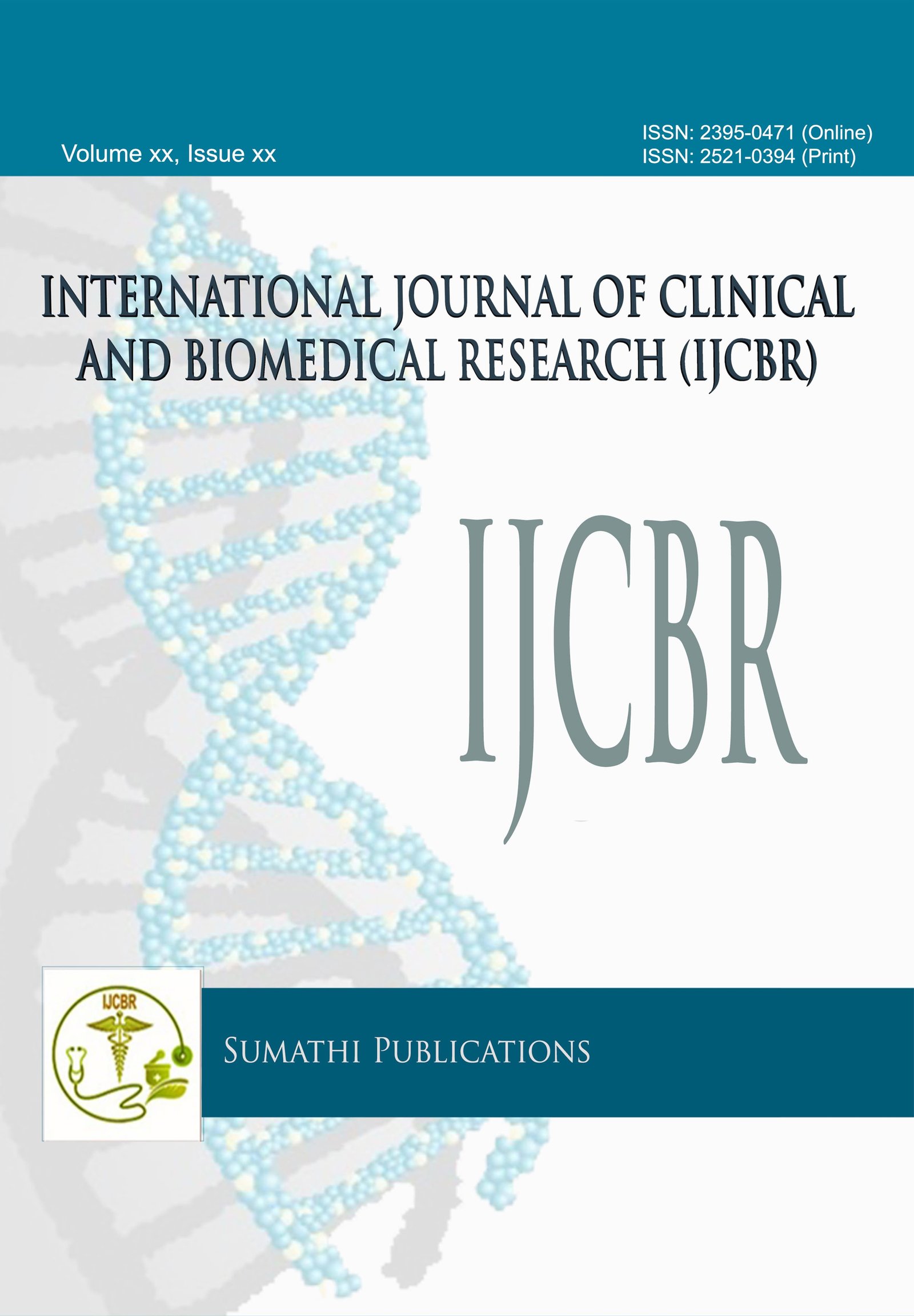PREVALENCE OF VULVOVAGINAL CANDIDIASIS IN SEXUALLY ACTIVE FEMALES WITH ANTIFUNGAL SUSCEPTIBILITY PATTERNS OF THE ISOLATES
DOI:
https://doi.org/10.5455/ijcbr.2018.42.09Abstract
Introduction: Vulvovaginal candidiasis (VVC) is the most common fungal infection of lower genital tract of females. It is an important cause of morbidity in young women due to its increasing incidence and is considered as an important public health problem worldwide. In recent years there has been a change in the trend of infections caused by non-albicans Candida species and anti-fungal susceptibility patterns. This study was carried out to assess the prevalence, potential risk factors and detect the antifungal susceptibilities of the isolates. Methods: A prospective study was conducted in a tertiary health centre of southern Odisha from January 2016 to December 2017and included 240 clinically diagnosed cases of VVC in the reproductive age group presenting with curdy white discharge with or without pruritus, burning, or dysuria. After getting an informed consent and brief history, vaginal swabs were collected and microscopic examination, culture and antifungal susceptibility were done. Results: Most common age group affected by VVC belonged to 26-35 years and majority of the cases were from rural areas. A total of 87 Candida species (36.3%) and, 4 Trichosporon asahii were isolated. Candida albicans was the most common isolate (52), followed by Candida glabrata. Most of the isolates were sensitive to clotrimazole (90.1%) followed by fluconazole (83.5%). Conclusion: The prevalence of VVC in our study was found to be 36.3%. Low socioeconomic status, low education, oral contraceptive pill users and Diabetes were the common predisposing factors. The most common agent causing VVC was Candidia albicans followed by Candida glabrata. Most of the yeasts isolated were sensitive to Clotrimazole followed by fluconazole.
Keywords: Candida; Vulvovaginal candidiasis; Antifungal susceptibility.
Downloads
Downloads
Published
Issue
Section
License
The journal allows the author(s) to hold the copyright without restrictions and will retain publishing rights without restrictions.
The submitted papers are assumed to contain no proprietary material unprotected by patent or patent application; responsibility for technical content and for protection of proprietary material rests solely with the author(s) and their organizations and is not the responsibility of the journal. The main (first/corresponding) author is responsible for ensuring that the article has been seen and approved by all the other authors. It is the responsibility of the author to obtain all necessary copyright release permissions for the use of any copyrighted materials in the manuscript prior to the submission.
What are my rights as an author?
It is important to check the policy for the journal to which you are submitting or publishing to establish your rights as
Author. Journal's standard policies allow the following re-use rights:
- The journal allows the author(s) to hold the copyright without restrictions.
- The journal allows the author(s) to obtain publishing rights without restrictions.
- You may do whatever you wish with the version of the article you submitted to the journal.
- Once the article has been accepted for publication, you may post the accepted version of the article on your own personal website, your department's website or the repository of your institution without any restrictions.
- You may not post the accepted version of the article in any repository other than those listed above (i.e. you may not deposit in the repository of another institution or a subject-matter repository) until 12 months after publication of the article in the journal.
- You may use the published article for your own teaching needs or to supply on an individual basis to research colleagues, provided that such supply is not for commercial purposes.









